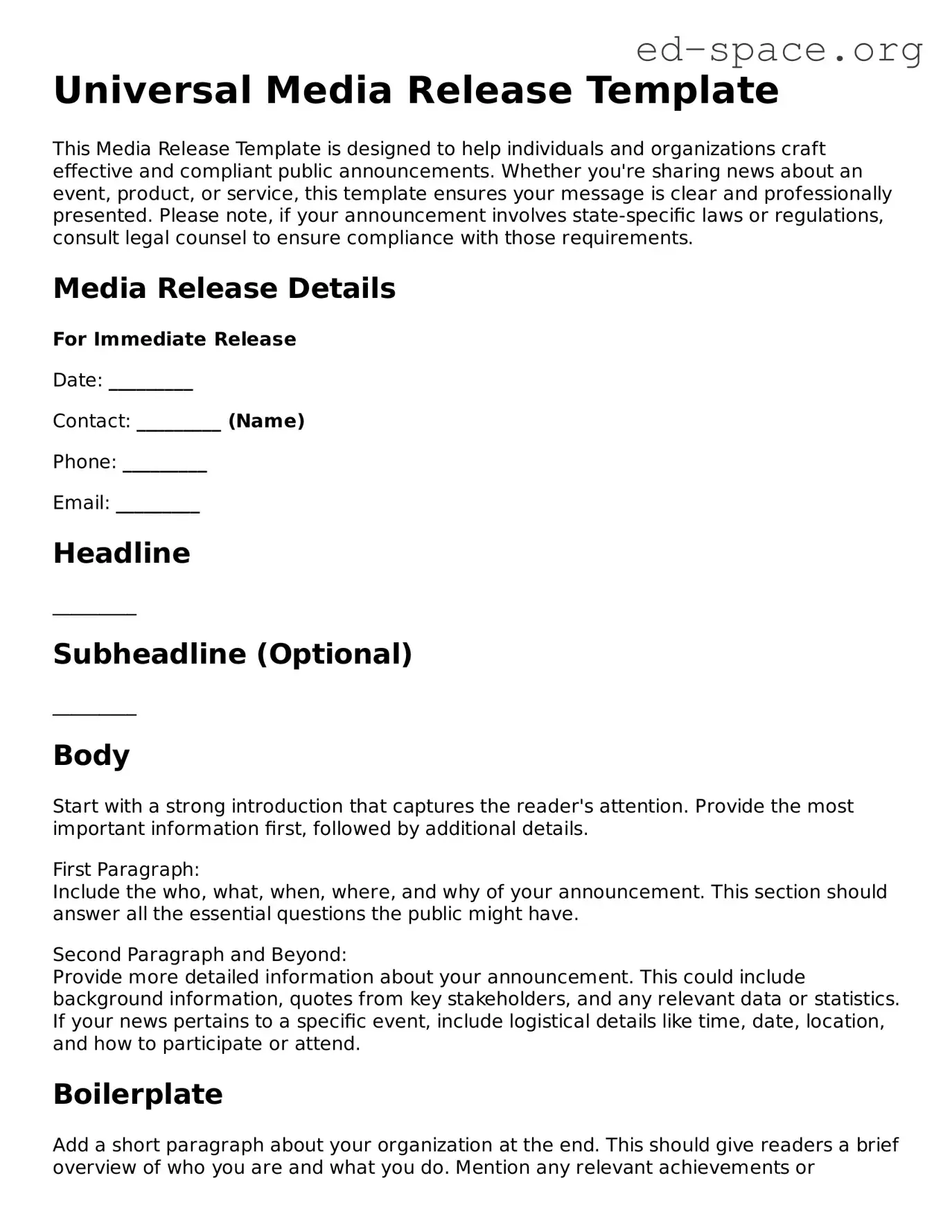Universal Media Release Template
This Media Release Template is designed to help individuals and organizations craft effective and compliant public announcements. Whether you're sharing news about an event, product, or service, this template ensures your message is clear and professionally presented. Please note, if your announcement involves state-specific laws or regulations, consult legal counsel to ensure compliance with those requirements.
Media Release Details
For Immediate Release
Date: _________
Contact: _________ (Name)
Phone: _________
Email: _________
Headline
_________
Subheadline (Optional)
_________
Body
Start with a strong introduction that captures the reader's attention. Provide the most important information first, followed by additional details.
First Paragraph:
Include the who, what, when, where, and why of your announcement. This section should answer all the essential questions the public might have.
Second Paragraph and Beyond:
Provide more detailed information about your announcement. This could include background information, quotes from key stakeholders, and any relevant data or statistics. If your news pertains to a specific event, include logistical details like time, date, location, and how to participate or attend.
Boilerplate
Add a short paragraph about your organization at the end. This should give readers a brief overview of who you are and what you do. Mention any relevant achievements or milestones that help to establish credibility and trust.
Call to Action
End your media release with a clear call to action. Tell the reader what step you'd like them to take next. This could be visiting a website, registering for an event, or following your organization on social media.
Relevant State Laws
If your media release is subject to specific state legislation, make sure to mention those laws here. For example, if you are based in California and your release includes customer testimonials, refer to the California Consumer Privacy Act (CCPA) compliance requirements.
Checklist before Sending
- Ensure all information is accurate and up-to-date.
- Check for grammatical and spelling errors.
- Verify compliance with relevant state laws.
- Have at least one other person review the release.
- Include all necessary contact information.
Remember, a well-crafted media release can significantly impact your organization's visibility and public engagement. Take the time to ensure it reflects your message and mission accurately.
